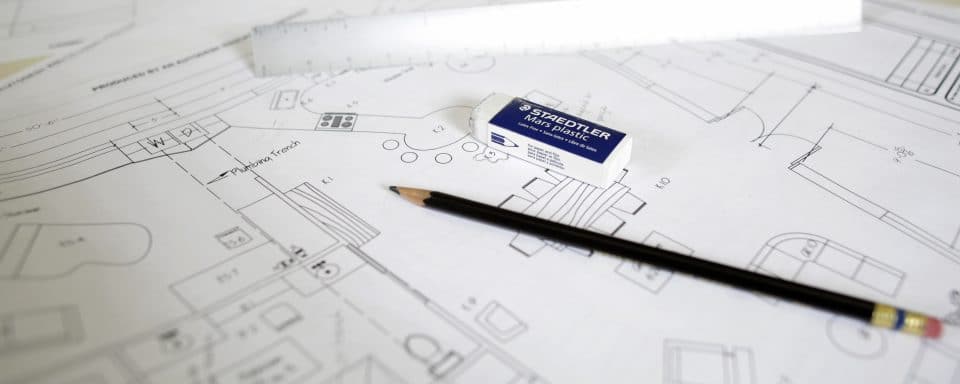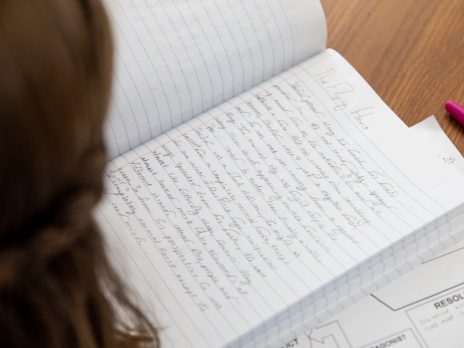Writing the assignment
Are you avoiding a paper assignment because you are not sure where to start?

We have compiled a few strategies below to help students overcome these fears and discomfort. We focus on the brainstorming and outlining process, introductions, paragraph development, and the revising process.
These resources are intended to support Students in the writing process, whether they are just starting or are in their senior year.
These “Do-It-Yourself” resources are best in combination with planning ahead and visiting the University Writing Commons.
The University Writing Commons is open for all students to come in and work on writing, whether it is brainstorming the first paper or wrapping up a final paper.
Writing the paper
Brainstorm Accordion Open
Taking what you’re thinking and putting it on paper can be pretty difficult. How do you make the main idea, character, plot, and the supporting details make sense? You don’t. That’s the answer; it isn’t supposed to make sense when you’re brainstorming.
Brainstorming is the process of producing an idea by participating in self-discussion or a group discussion. Brainstorming is writing down a few main ideas then picking one, then you write a lot of secondary ideas and pick from those, then you write down a ton more supporting details and pick from those. It is a long process and there are times where you have to do it multiple times because you don’t like your secondary ideas or your supporting details. There’s a method to this madness through and it makes for a great paper!
A 20-30 minute focused brainstorming and outlining session, on a napkin if you wish, gets your brain to accept that writing is a process that requires time.
You might point to your skull and say: “I am writing it up here.” Well, if it works well for you, skip the napkin.
Remember though that for most writers, their inner writer is not enough to have a perfectly organized final product that will meet their professors’ or future supervisors’ expectations.
Here are some good reasons for practicing brainstorming and outlining techniques:
- Once completed, you will have a map that narrows down what you will address in your paper and what your main points will be.
- Instead of asking your professors and future supervisors to imagine your brilliant idea, you will hand them your napkin and they might be impressed.
- If J.K. Rowling had not outlined her characters and the sequence of events, Harry Potter might have married Hermione instead.
When you can visualize your ideas, scratch out ideas, circle concepts that you want to emphasize, or draw connections between ideas, you will be better able to be the next great novelist. If that is not your career goal, outlining your ideas will help you in the short run to be a successful writer for your classes.
You can ask yourself several questions to start brainstorming and outlining your paper, such as:
- What am I supposed to do based on the assignment instructions?
- What sections are necessary?
- What argument am I making?
- What can I do to support my argument?
- Why is my argument important?
- What story am I telling?
- Who needs to know?
- Once you start putting your ideas on paper, you will know which areas need most research and what you need to find out from your professor to make sure you understand the purpose and the various components of your writing assignment.
Next steps and additional information
Starting a paper is easy for some. For most of us, it can be intimidating and can lead to writer’s block.
To avoid hours of staring at the computer screen, start your brainstorming and outlining early!
Follow the strategies below to strengthen your process or find a new one:
- Take 20-30 minutes of focused time and write down ideas that you have. This might lead to multiple drafts of the outline.
- Use Powerpoint or Keynote to build a presentation around your ideas first.
- Take 20-30 minutes to talk through your ideas.
- Check with your Professor and use your outline to go over ideas that you want to develop in your paper.
- Start early.
- Check in with a Writing Assistant at the University Writing Commons
Introductions & conclusions Accordion Closed
To understand how important the introduction and conclusion are, think of your professor collecting 148 student papers, all of which need to be read, evaluated, and graded. They will:
- Use your introduction to understand what your paper is all about
- Look for your thesis and/or purpose statement to see the main points you will address
- Put your paper down in frustration if your introduction is not concise and does not include a thesis and/or purpose statement
Introductions
Introductions identify the document’s purpose—immediately. Every major wants you to know how to write good introductions, so make sure you know what the specific parameters are that your major or your professor want you to use. If you are supposed to provide a brief context before you provide your thesis statement, you might be writing in a humanities course. If you are supposed to put your problem statement as the first statement in your introduction, you might be writing for a chemistry course.
To write clear and succinct introductions is especially difficult for “warm-up writers.” What this means is that you find many ideas interesting, and that you want to include everything that you learned about in your introduction. You only want to provide a very brief context statement, and 2 pages later you realize that you still haven’t made it to the thesis statement. If that sounds familiar, then:
- Talk through your ideas with a roommate, classmate, or Writing Assistant.
- Write an outline
- Design a presentation with the main points you want to address
- Write an email to an understanding aunt, friend, or high school teacher who is interested in your work and won’t mind writing you back with questions that will get you focused.
None of your professors in any major is interested in what is sometimes lovingly called “fluff.” You would insult your professor if you thought that his instructions include fluff. Instead, different conventions are used by different majors for different purposes. Your job is to learn how to adapt to everyone’s house-rules.
Thesis statements
It is a truth universally acknowledged, that a student in possession of a good idea must be in need of a thesis and/or purpose statement. To know what a good thesis and/or purpose statement is, find out what the assignment parameters are. Your thesis statement and purpose statement need to be adjusted to the rhetorical situation – your exigence, audience, and constraints.
Often, thesis statement and purpose statement are used interchangeably, but your professor might distinguish between those two terms:
- Thesis Statement: Usually makes an assertion about the topic and predicts how the topic will develop. This is largely expected in the humanities and social sciences.
“Elon Musk continues to influence public discussion on energy due to his work in …” - Purpose Statement: Usually announces the purpose, scope, and direction of the topic. This is largely expected in the sciences and technological fields.
“This paper examines . . .,” “The aim of this paper is to . . .,” and “The purpose of this essay is to . . .”
If you’re not sure which approach to take, ask your professor for an example of a good thesis statement or purpose statement.
Your thesis or purpose statement can only be developed if you have a very good sense of what you want to say. What you want to say, and what you actually do say, will also determine the revision process. To get started:
- Design an outline! It helps to reduce your ideas to brief phrases that lead to examples. The phrases often have specific details that you’ll use in the thesis and purpose statement.
- Talk through the overall purpose of your paper – more than once. Your ideas will change, and with it your thesis statement and/or purpose statement.
- Design a slide that focuses on the overall purpose of your report, essay, or presentation.
- Revise your statement once your draft is completed! It’s often better to write the thesis or purpose statement last because you’ll have a better idea of your overall work.
Conclusions
Conclusions can serve multiple purposes. You need to find out whether the assignment instructions or your professor tell you to use the conclusion to:
- Summarize your main points.
- Focus on an area that you could not fully explore in your writing but would like to continue working on
- Provide recommendations for what should happen now that you conducted your research
- Present further research questions that you became interested in because of the research you did.
A conclusion helps you round up your work, and it helps the reader understand the overall point of the work, the process or steps taken in your work, and what your results, findings, or recommendations are.
An additional tip!
- For those times when you can not help yourself but you must include a detail or an example that is absolutely relevant to the section of the paper, and you have an inkling that perhaps it is another paragraph or perhaps … write it up and place that idea into a Footnote or an Endnote! Stay focused on your original point of the paragraph, but allow yourself to say what seems important.
Next steps and additional information
Once you have a topic to write about, and you have a good idea about the structure of the paper because you wrote an outline, you are ready to work on your introduction and conclusion
- Read the assignment instructions carefully to find out what your professor wants to see included in the introduction.
- Write a rough draft of your introduction to settle on the main points you will address in the paper.
- Revise your thesis when you are done writing your paper. Many times, your thesis and problem statement will need to be adjusted to reflect the main points from your paper.
- Do not let the conclusion take you away on a new adventure just yet. Stay focused on the task at hand, which is to conclude your current paper.
Conclusions: Purdue OWL’s resource on introductions, body paragraphs, and conclusions show you what generally accepted structures are for a humanities-focused paper.
Thesis vs purpose statements: University of Wisconsin-Madison’s handout on Thesis vs. Purpose Statement includes sample statements that show you what the difference between the two is. Bring these examples to a meeting with your professor if you are not sure what you are asked to do.
How to write a thesis statement: Indiana University-Bloomington’s pamphlet on How to Write a Thesis Statement includes information on how to generate thesis statements if the topic is assigned and is not assignment. They also show you how to distinguish a weak thesis statement from a strong one.
Writing tips: thesis statements: University of Illinois at Urbana Champaign focuses their handout on Thesis Statements to encourage you to ask questions when formulating a thesis.
Paragraphs Accordion Closed
Writing for many of your courses will require you to write in paragraph format. Paragraphs, generally, are comprised of:
- Topic sentence, often stated at the beginning of the paragraph. Each main point relates back to your thesis statement and/or purpose statement.
- Body sentences, often examples that support the main point. This might be 2-3 sentences, or 2-3 paragraphs, depending on your discipline.
- Transitions that show connections between paragraphs.
Remember that the genre, purpose, and audience influence how you develop paragraphs. Most majors are asked to write so that they can show their understanding of the materials and concepts addressed in a class. Writing well-developed paragraphs – following a well-developed thesis – shows that you can move from a general idea (topic sentence) to detailed examples and supporting materials.
Next steps and additional resources
Writing solid paragraphs in your major might be different from writing solid paragraphs in another major. It takes practice to find out what’s expected of you. To be successful:
- Take a section of your paper to your professor and ask for feedback on your paragraphs. Are they too brief? Is there not enough detail? Is there too much detail? Does the topic sentence provide guidance for the purpose of the paragraph?
- Adapt your paragraph development to the purpose of the assignment and to your audience.
- Go for it! Draft your paper once you have an idea of how much detail you need.
- Edit your own writing by designing an outline based on your draft. Yes, you can outline after you finished a draft. Define your paragraph’s purpose with keywords. If you have a list of keywords, then you probably have more than 1 main idea in that one paragraph, and you’ll need to develop some of those ideas in separate paragraphs.
- Read your topic sentence and jump to the conclusion of the paragraph. Are you still on the same topic? Great! Did you move to a different topic? Separate that paragraph or revise it so that you do not leave the paragraph’s purpose.
- Revise your topic sentence if you realize that your paragraph moved in a different direction.
Organizing your Social Sciences paper: paragraph development: The University of South Carolina’s Library Guides shows you how to organize your social sciences paragraphs. They provide some troubleshooting techniques, and they address the general structure of a paragraph, and how to develop and organize paragraphs.
Paragraphing: The University of Wisconsin-Madison shows you how to improve your paper by writing successful paragraphs. They address the function of paragraphs, how long they can be, and what sentences you will find in a paragraph. They also include sample paragraphs.
Paragraphs and topic sentences: Indiana University – Bloomington offers this page which, in addition to paragraph structure, focuses on paragraph coherence and on transitions that move you from one paragraph to the next.
Revise Accordion Closed
“Really? I have to read my paper again? I am sure it’s perfect already.” Few seasoned writers claim perfection, and most writers revise and edit. Writing that goes through multiple revisions and editing rounds is usually clearer, audience-focused, and easier to read. Both practices are important to apply if you want to hand in a well-written final draft. Here are the differences (and an additional term that comes in handy):
- Revising: you pay attention to higher-order concerns such as thesis statements and paragraph development. You move ideas around, bring in more examples, or write a stronger conclusion. You might even change your initial idea and make it more complex, or change your initial idea to something completely new.
- Editing: you finished your revisions and you are ready to refine your idea by eliminating distracting words, including a better visual, or choosing the best words possible to make your meaning clear.
- Proofreading: proofreaders pay attention to correctness only. A proofreader does not provide feedback and focuses on correcting text according to a required style (APA, MLA, IEEE). Proofreading is a solitary activity, and is a highly paid job.
When you are ready to revise your draft, come to the UWC and work with a Writing Assistant. Writing Assistants are trained to work on higher order concerns (refining your ideas, discussing paragraph development) and have much experience with providing suggestions and asking you questions. They also work with you to clarify your sentences, to choose appropriate words, and to include appropriate visuals. When misplaced commas interfere with the argument point, then the WA takes time to point this out and recommends exercises or provides a tip on how to clean up the rest of the misplaced commas.
Once you have your first draft ready to go, use some of the revising strategies we recommend:
- Revise your writing in sections instead of focusing on the entire paper.
- Reread 1-2 sections and decide what to revise and what to edit. For example, choose the section before the conclusion and reread that first. Without the introductory paragraph, does it work? If not, revise it so that each section can stand on its own.
- For editing: Choose 1-3 paragraphs and reread them in reverse order. Read the last sentence of the paragraph, first. Each sentence needs to stand on its own. You’ll find fragments (when you’re missing the subject), and you’ll find pronoun references when you need a proper noun (Who or what is “It” anyway?)
- Set aside time to revise and edit your paper in 1-2 hour increments over several days. Don’t set aside 3-4 hours to work on the paper and never return to it again. Just like preparing for an exam, break up the time.
If you need a proofreader, we recommend professional services that will help you correct any mistakes in your writing. The UWC focuses on the growth of the writer, so we don’t offer correction services.
Feedback
Writing improves because we write, and because we get feedback. We get feedback all the time, whether it’s about a nice tie, our work ethic, a painting, or a soccer goal. For writers, feedback is necessary to get better at it. But not everybody likes to share their writing attempts. Do any of these statements make you nod your head vigorously?
- Having to hand in a draft prolongs my anxiety.
- If it’s just a draft, I don’t need to take it very seriously. I won’t get a grade on it anyway and I can revise.
- Revision means to make all the easy changes that my professor pointed out.
- Revision means to glance over changes that would make you take out a paragraph, change your thesis statement, and do some serious rewriting.
- I don’t know where the University Writing Commons is located.
If you can answer yes to any of these questions, then it’s a good idea to reconsider how you approach writing!
Singers, dancers, painters, football players, swimmers, pitchers all improve because of feedback from their coaches. Coaches can:
- See how the individual is performing and can give feedback on how to improve a mediocre performance.
- Offer suggestions and tips on how to stop a bad habit.
- Show new techniques that will improve a performance.
- Provide hands-on opportunities to practice.
It is not enough for a singer to read about notes, or for a swimmer to learn about strokes, or for a baker to read about high altitude techniques. Knowledge and practice let us learn by doing. Receiving and working with feedback is how we revise and refine our skills.
When you receive useful and constructive criticism on your writing, it is meant to show you where you did well, where you need to revise an idea, expand on an idea, or focus an idea before committing to a final work. It’s not a criticism of who you are.
Feedback does not always come from your professor. You can talk to a Writing Assistant at the UWC. You can also organize your own feedback session. For example, in a course with multiple papers or a large paper in several drafts, you can:
- Organize a feedback circle and use Google Docs so that you’re not working in isolation.
- For collaborative work, organize who will take stages of the paper to a Writing Assistant at the UWC (more than 1 student can attend!)
- For large collaborative work, invite a WA from the UWC to attend your initial paper-preparation meeting. The WA can serve as a sounding board and provide insights on how to draft sections of the large paper.
Always be proactive. Feedback will improve your writing performance, even if you think you are the best writer in your class. You’ll learn to engage with multiple perspectives and multiple audiences, and you will learn to distinguish between constructive feedback and not-so-constructive feedback. Here are some steps to take to get the most out of your feedback sessions:
- Meet with your professor after you have a draft of the introduction and 1 section with details and examples. Walk through these sections and get feedback.
- If you get a paper back with feedback, don’t skip to the grade without looking at the feedback. You’ll want to know what you need to work on for the next paper.
- Clarify any comments that the professor put on your paper with the professor. Be prepared to repeat what you understand the feedback to be.
- The feedback isn’t about you and your value as a human being; it’s about the document.
Next steps and additional resources
Revising drafts: The University of North Carolina-Chapel Hill addresses the importance of revising your drafts. The handout also goes over the process of revision.
Revising the draft: Harvard University’s Writing Center includes an example of a revised draft, and outlines principles to keep in mind when revising.
Editing and proofreading: The University of North Carolina-Chapel Hill gives you excellent pointers on editing and proofreading, with tips on how to apply both editing and proofreading techniques.
Getting feedback: The University of North Carolina-Chapel Hill explains the importance of getting feedback. You’ll find information on why people don’t ask for feedback, and also what kinds of feedback to ask for.
If you are an ESL writer, feedback is especially important to know whether you understood the assignment and whether you understood conventions of U.S. writing principles. UNC-Chapel Hill provides a good resource on how to ask for specific feedback.




